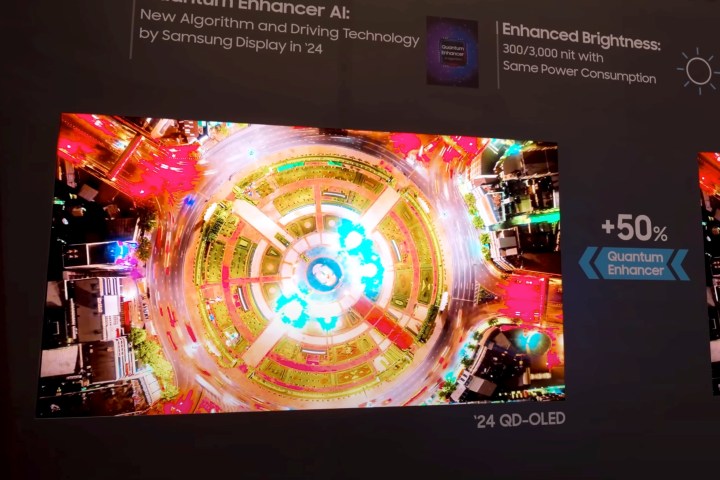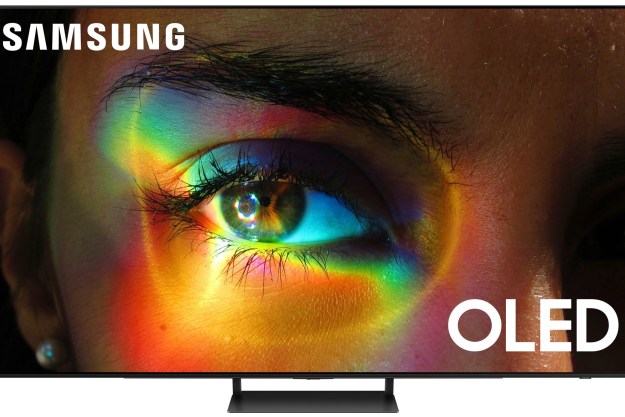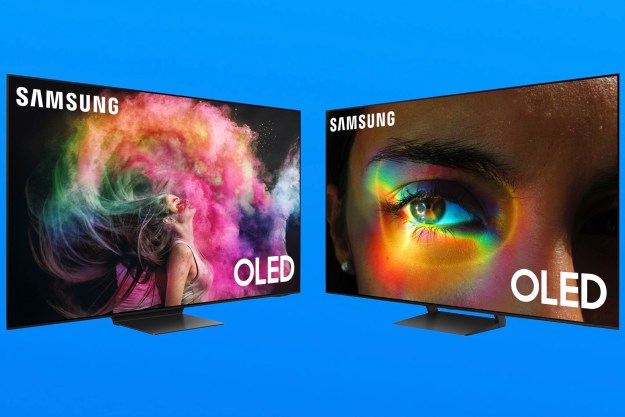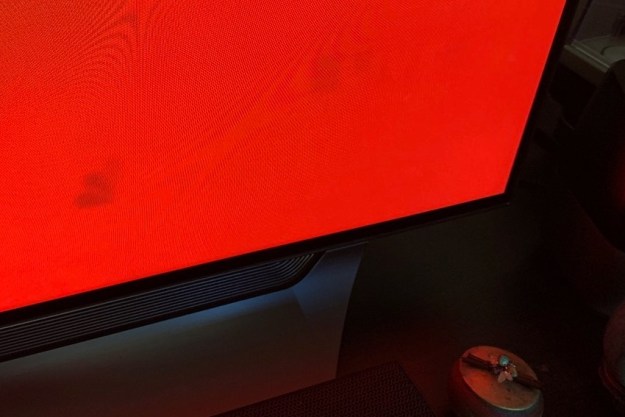
CES 2024 has been dominated by TV manufacturers touting massive increases in brightness. You can count Samsung among them, but with a slight twist — the giant electronics firm says its latest QD-OLED TV panels aren’t just bright, they’re also color-accurate, and it says it has the receipts to prove it.
Specifically, we’re talking about Samsung Display — the Samsung subsidiary that designs and fabricates the displays that eventually get integrated into TVs you can buy from companies like Samsung Electronics and Sony (yes, Sony’s QD-OLED TVs use Samsung Display panels).
Samsung Display says its latest generation of QD-OLED (quantum dot-OLED) panels can achieve an impressive 3,000-nit peak brightness. But since Samsung Display isn’t alone on that claim (LG Display has made an identical claim for its latest WOLED panels), it’s putting an equal weight on its panels’ color accuracy. Apparently, that accuracy is good enough to meet a very strict standard: Pantone certification.
For decades, Pantone has been the leading authority on color in both the print and electronic worlds, and Samsung Display says that its newest panel is the first to receive Pantone’s stamp of approval.
If that doesn’t impress you, then maybe this will: Professional color grading monitors — which require the highest degree of color accuracy — will soon be available with Samsung’s QD-OLED panels. Only Sony’s professional-grade RGB OLED panels have historically been accurate enough for such a task.
As editor at large Caleb Denison points out in his excellent Samsung Display booth tour video — which has a lot more info on the latest QD-OLED tech — 2024 consumer TVs that incorporate these new panels likely won’t reach that full 3,000-nit peak brightness level (panel longevity concerns will result in an abundance of caution), but they will almost certainly deliver on both color brightness and color accuracy at a noticeable level.
Our first opportunity to see this for ourselves will be when Samsung Electronics and/or Sony send us their newest QD-OLED TVs for testing.
Editors' Recommendations
- Samsung unveils pricing and preorder details for its 2024 OLED TVs
- Could LG’s 3000-nit OLED finally end the brightness wars?
- Samsung’s new Dolby Atmos wireless speaker doubles as a picture frame
- Samsung’s flagship HW-Q990D Dolby Atmos soundbar gets Roon support
- LG’s 2024 OLED M4 takes AI processing to new heights ahead of CES





